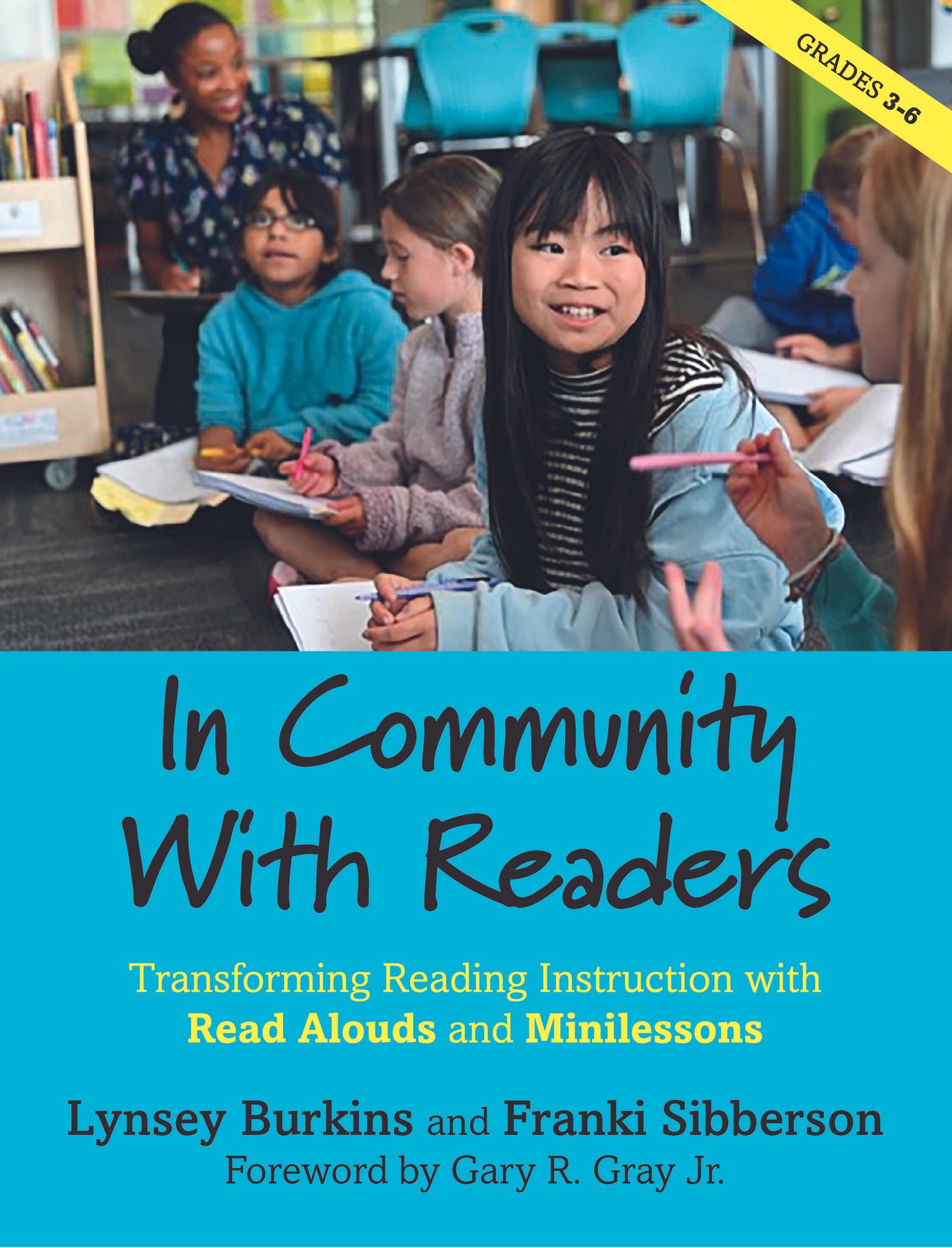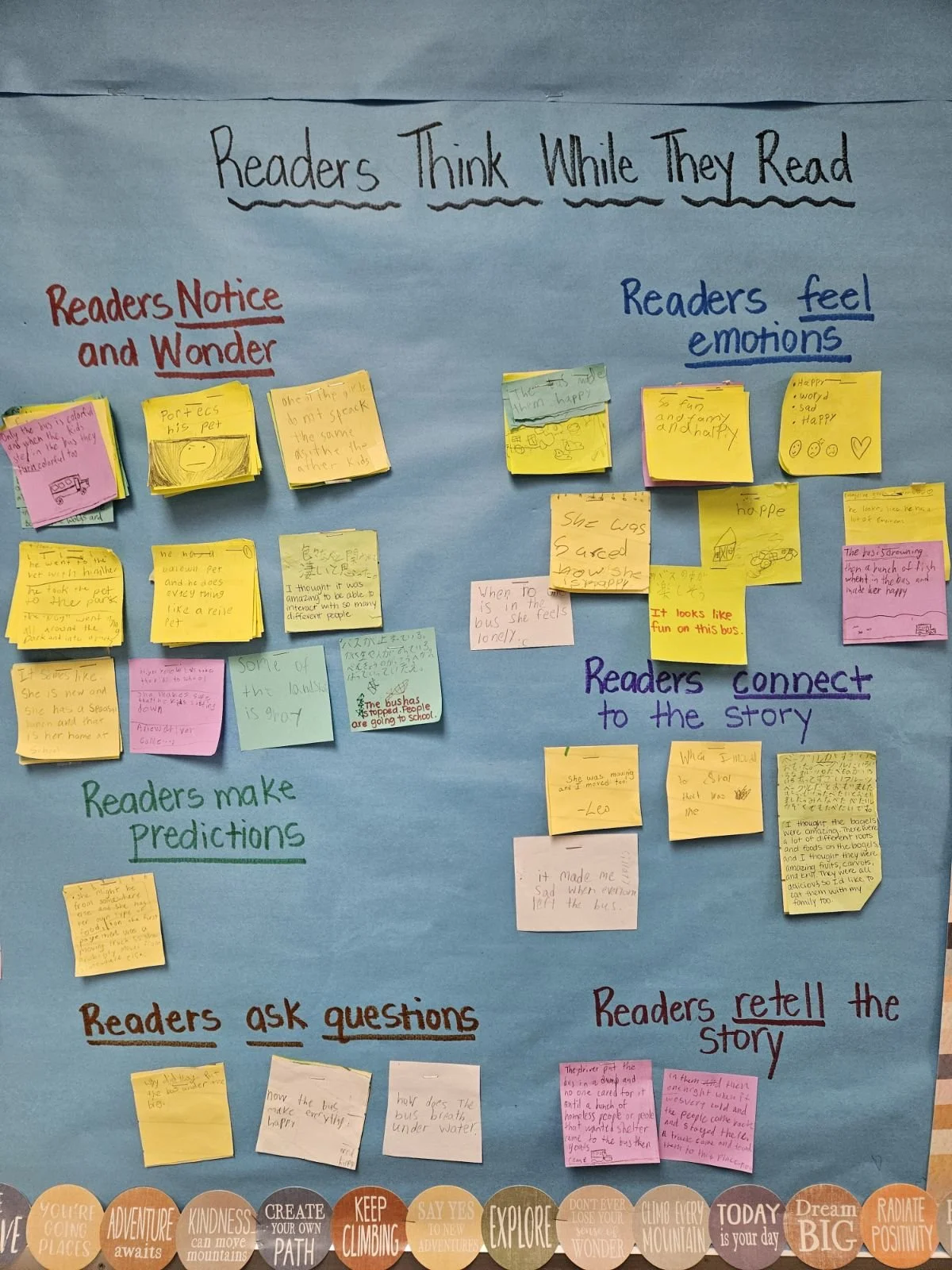Planning a Minilesson on Annotating
I visited a 4th grade classroom a few weeks ago. The teacher was introducing the idea of annotating to her students.
I know from past experience with this skill in the middle grades that children often need practice paying attention to their own thinking while they read. I wanted this to be a lesson that would move children forward in that skill while also giving us, as teachers, information that we could learn from and build upon for future minilessons.
When teaching beginning lessons on annotating, my main goal is to make sure that children are comfortable sharing their true thinking and that there is no “wrong” type of annotation. Early in the year (and always) we want students to know that all of their thinking is valued and relevant.
The Students:
The teacher had mentioned that they had started working on capturing their thinking but that most of them wrote after they read–at the end of the piece. I realized that this was a common thing i saw when i taught 4th and 5th grade. Sometimes students have had experiences where they respond after they read something. Learning to pay attention to and recording your thinking during your reading is a skill that needs to be explicitly taught and practiced. And it is such an important skill because when readers can attend to their thinking, they can better make sense or text, recognize confusions and begin to provide evidence for their thinking.
The Standards:
Before I planned, I took a look at the 4th grade standards that we’d address. I know our standards well but i wanted to make sure i was focused on the specifics for 4th graders. When I was in the classroom, I kept the standards handy so that I could refer to them often throughout a minilesson cycle. The standards we’d focus on were:
Refer to details and examples in a text when explaining what the text says explicitly
and when drawing inferences from the text.
Describe in depth a character, setting, or event in a story or drama, drawing on
specific details in the text (e.g., a character’s thoughts, words, or actions).
By the end of the year, read and comprehend literature, including stories, dramas,
and poetry, in the grades 4–5 text complexity band proficiently, with scaffolding as
needed at the high end of the range. Activate prior knowledge and draw on previous
experiences in order to make text-to-self or text-to-text connections and comparisons.
Choosing the Book:
I wanted to share a book that I knew children hadn’t read because I wanted them to practice noticing thinking in a book they were not familiar with. I also wanted a book where the pictures told much of the story. I did not want a book that was text heavy for this lesson. Fabulous images support kids in noticing their thinking. I chose The Yellow Bus by Lauren Long after making sure this one hadn’t been shared in the classroom yet. This book was perfect for many reasons:
Images tell so much of the story which is important early in the year. Often children who are not confident readers are willing to engage fully to images as well as words.
The focus on images will support readers in “Refer to details and examples in a text when explaining what the text says explicitly” as stated in the standard. Often, practicing this skill with images first helps readers understand the concept and they are better able to transfer to text.
and when drawing inferences from the text.
Repeating phrase that gives hint to theme of book
Short and easy to read in one sitting
Choosing the Tool: Sticky Notes
I decided on 3X3 sticky notes because they are low-stakes. Sticky notes are a mall something to write on and for some kids, much less intimidating than a blank piece of paper in a notebook. I also chose sticky notes because i knew we’d want to follow up by discussing and sorting them in some way
I decided on 3 sticky notes per child. I planned the read aloud so that we’d stop 3 times and of course, children who had more to say could write more. I created strips of 3 sticky notes per child with the back of the paper blank for those children who chose to record more.
Planning the Conversation
I wanted children to focus on their writing for this lesson. I wanted them to have some quiet so they could pay attention to their own thinking. I knew this group was comfortable talking about a book so for the first read of The Yellow Bus, I asked them to write their thinking instead of saying it. So, whatever it was they wanted to say to the group, that was the thinking they should record on a sticky note.
Because the book is short, we were able to read the book a second time during the same session and shared some of our thinking (although had I been the classroom teacher and with the group daily, I would have done the 2nd read the next day.)
My only role during their sharing was to say, “What in the book makes you think that?” because I wanted them to begin to think about and practice referring to details to support their thinking (as mentioned in the standard). My role during the conversation was to just ask this question over and over and to listen.
Follow Up: Naming and Charting the Types of Thinking Chart
As we walked around the room, we noticed a few types of thinking. We wanted readers to begin to see all of the types of thinking they did during reading. So as a follow-up lesson, the teacher had the kids study their sticky notes and name the type of thinking they were doing. Then they created a chart. The chart served a few purposes:
The chart made visible the variety of ways readers think while reading.
The chart supported children in naming the types of thinking they were doing
The chart created a visual support that students could refer to later and that could be used in a later minilesson.
The chart showed the power of collective thinking.
It allowed us, as teachers, to see the patterns in children’s thinking –information that we could use to plan future minilessons.
As always, there were a few things I’d change about the lesson if I were to do it again, but overall, it worked well and met the goals we had intended.




